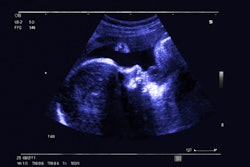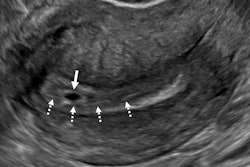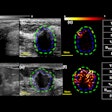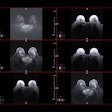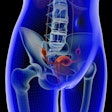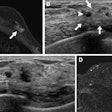Additional ultrasound in pregnant women who feel less fetal movement leads to fewer complications, according to findings published July 10 in The Lancet Obstetrics, Gynaecology & Women's Health.
Researchers led by Laura Lens, MD, from University Medical Centre Groningen (UMCG) in the Netherlands, found that their management approach with an added fetal Doppler ultrasound measure -- the cerebroplacental ratio -- reduced adverse outcomes in pregnant women with non-small-for-gestational-age (non-SGA) fetuses.
"This study supports the use of the cerebroplacental ratio for the identification of fetuses that might benefit from expedited birth or expectant management," Lens and colleagues wrote.
The cerebroplacental ratio measures blood flow in the fetal brain and the umbilical cord. A low ratio measure potentially means that blood flow is being redistributed to the fetal brain. This indicates placental dysfunction and a higher risk of adverse outcomes during pregnancy.
The researchers noted a lack of data and recognition of non-SGA fetuses at increased risk for adverse outcomes related to placental dysfunction.
Lens and co-authors performed a multicenter, cluster-randomized trial at 22 Dutch hospitals and one Australian hospital. They randomly assigned hospitals in a 1:1 ratio to either cerebroplacental ratio-based management (revealed group) or care as usual (concealed group). The researchers performed additional Doppler ultrasound of the fetal middle cerebral artery and of the umbilical artery in all study participants to measure the cerebroplacental ratio.
Analysis included data collected between 2020 and 2024 from 1,815 women who participated in the trial. Of these, 910 women from 10 hospitals were in the revealed group while 905 women from 12 hospitals comprised the concealed group. The team also included 1,684 women in modified intention-to-treat analysis.
The primary outcome consisted of a combination of adverse perinatal outcomes. These include the following: stillbirth, neonatal mortality (< 28 days), a five-minute Apgar score less than 7, umbilical artery pH less than 7.1, and emergency birth for fetal distress or severe neonatal morbidity. The team analyzed these data points by intention to treat.
The primary outcome occurred in 12% of the women (99/853) who received cerebroplacental ratio-based management versus 15% of women (127/831) who received care as usual (relative risk, 0.76).
The team reported no stillbirths in either group, although one neonatal death occurred in each group. Also, 12 serious adverse events occurred in the revealed group while 14 occurred in the concealed group. The authors noted that none of these were tied to the study procedure as deemed by the local principal investigator and the medical ethics board of University Medical Centre Groningen and the data safety monitoring board.
The findings add information about the identification of fetuses that could benefit from provider-initiated expedited birth or expectant management, the authors wrote.
"These data could inform the design of future protocols and guidelines for the management of reduced fetal movements in non-SGA fetuses at term," they added.
Sanne Gordijn, MD, PhD, from UMCG, said that if doctors know the cerebroplacental ratio result, they can better decide whether reduced fetal movement is harmless or requires action.
"This ensures that both mother and baby receive the care best suited to their situation," Gordijn said in a prepared statement.
The team’s study can be accessed here.







